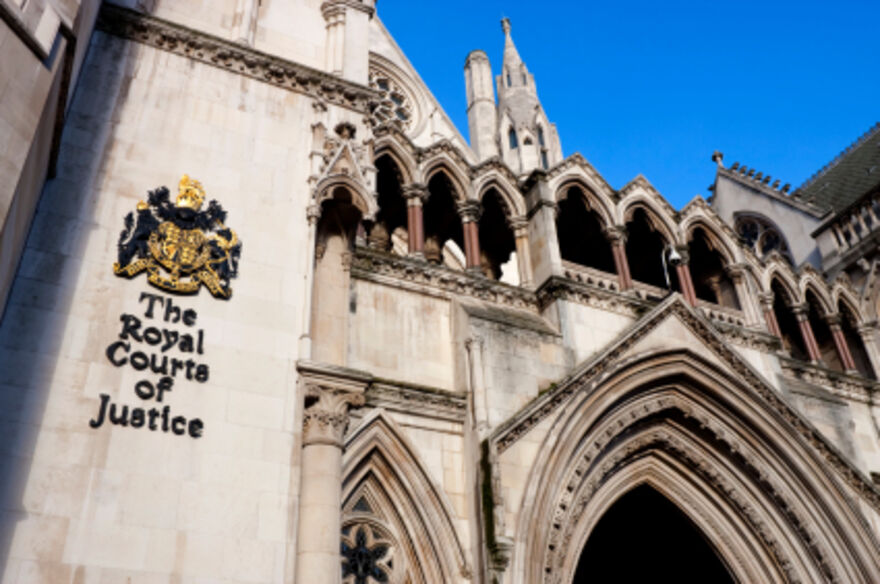In the appeal of Harvey v Dunbar Assets plc the Court of Appeal considered an unusual situation where a debtor had run the same arguments to identical statutory demands some three years apart. Mark Baldwin considers the judgment.
Mr Harvey had given a guarantee to Dunbar Assets plc (“Dunbar”). Dunbar made a written demand under the guarantee and subsequently issued a statutory demand in respect of the debt. Mr Harvey made an unsuccessful application to set aside the demand. On appeal, the statutory demand was set aside on other grounds, which were subsequently disposed of in Dunbar’s favour. Dunbar, therefore, issued a second statutory demand against Mr Harvey, who then sought to set aside the demand on the same grounds as he had unsuccessfully relied on before. The Court of Appeal had to decide whether the District Judge and His Honour Judge Kaye QC had been right to dismiss the second application as an abuse of process.
On 10 March 2008 Mr Harvey and three other co-guarantors gave Dunbar a guarantee for the liabilities of Vision Development Ashbourne Limited (“Vision”) limited to £720,000. Vision failed and on 22 March 2011 Dunbar made a demand on it for some £4.8m and 4 April 2011 made a formal demand on Mr Harvey under the guarantee for £720,000. Subsequently, Dunbar issued a statutory demand against Mr Harvey on 16 June 2011 for £720,000 plus accrued interest.
Mr Harvey made an application to set aside the statutory demand, which came before District Judge Pescod (“DJ”) on 27 January 2012. Mr Harvey’s argument was that Dunbar’s manager had given him an oral assurance that the bank would not seek to enforce the guarantee, which created a promissory estoppel preventing Dunbar from enforcing its guarantee. The DJ, in a reserved judgment given on 20 March 2012, concluded that the defence disclosed no triable issue which had a real prospect of success and dismissed the application. He thought it unlikely that the manager had made such a representation and secondly that Mr Harvey had relied on it.
Between the hearing and the handing down of judgment, one of the co-guarantors, Mr Lenney, had succeeded in having the statutory demand against him set aside on the basis that he alleged that his signature on the guarantee was a forgery. Whilst this allegation had been in the papers before the DJ, no argument had been run on it. Mr Harvey, through new solicitors, sought permission that his application should be re-opened on the ground that the guarantee was not a binding contract if not signed by all the parties. The DJ refused but gave Mr Harvey permission to appeal on the new ground only. No permission was pursued in relation to the promissory estoppel ground.
The appeal initially came before His Honour Judge Kaye QC (“HHJ”), who dismissed it on 7 September 2012. A subsequent appeal to the Court of Appeal was granted and the statutory demand was set aside on the basis that it had not yet been determined whether or not Mr Lenney’s signature was a forgery.
Dunbar issued proceedings against Mr Lenney, who although represented by solicitors and counsel until days before trial, did not attend the trial itself. Handwriting experts instructed by both sides concurred that the signature on the guarantee was indeed that of Mr Lenney. Norris J required Dunbar to prove its case and on 14 July 2014 made a declaration that Mr Lenney had signed the guarantee, and that Dunbar might enforce it. This was not appealed.
Accordingly, Dunbar made a second formal demand on Mr Harvey on 29 August 2014 for £720,000, and on 3 September 2014 issued a statutory demand for that sum plus accrued interest (“SD2”).
Mr Harvey then made an application to set aside SD2 on 13 October 2014. He relied on the evidence filed in his first application and new witness statements from others who claimed to have had similar experiences and were part of the Dunbar Action Group. He, therefore, advanced the same promissory estoppel defence. This application came before DJ on 17 April 2015, who dismissed the application in a reserved judgment. He held that Mr Harvey was attempting to re-litigate an issue that had already been decided and that that was contrary to the principle of ‘res judicata’, but in any event, he was not satisfied that the additional evidence raised a triable issue.
Mr Harvey’s appeal against that decision was heard by HHJ on 5 November 2015 and was dismissed. His subsequent appeal to the Court of Appeal was heard on 15 December 2016.
Henderson LJ gave the judgment of the Court, with which Sir Stephen Tomlinson and Gross LJ concurred.
Henderson LJ was satisfied that HHJ had carefully considered the authorities arising out of Turner v Royal Bank of Scotland [2000] BPIR 683 summarised as follows:
“First, the court, on the hearing of a bankruptcy petition at least, has a duty to consider, on the material before it, whether the conditions for the making of a bankruptcy order are satisfied…Second on such a hearing where there has been a previous hearing on the merits, whilst the court ought always to ask itself whether the arguments have been previously run and failed, and, why arguments now advanced have not been run before, absent a change of circumstances or some other special or good reasons or circumstances, the debtor cannot go back on the hearing of the petition…to re-argue or reiterate arguments presented earlier, or which he had an opportunity to present. The basis of this principle (which has been referred to in the recent cases as the Turner principle) is that to hold otherwise would be to encourage a waste of court time, a waste of the parties’ money and defeat the obvious purpose of the statutory scheme which was that arguments on whether or not there was a genuine debt ought to be raised at the earliest stage i.e. on the application to set aside the statutory demand.”
Counsel for Mr Harvey argued that there was no issue estoppel or res judicata as the original judgment on the first statutory demand had been set aside and that the Turner principle did not apply because Mr Harvey was not running the same argument at a bankruptcy hearing. Finally, Mr Harvey submitted that there was a material change in circumstances because of the new evidence advanced.
Henderson LJ agreed that the case was not one of res judicata or issue estoppel. However, he held that the Turner principle ought to apply in this case when Mr Harvey was:
“not only seeking to rely on the same arguments as before, but he chose on three separate occasions not to pursue a possible appeal against the original decision ….”
On the first appeal to the Court of Appeal in 2013, Mr Harvey had expressly abandoned the promissory estoppel argument. Henderson LJ also concluded that the DJ and HHJ had been correct to conclude that the new evidence advanced by Mr Harvey did not give rise to a special or exceptional circumstance to allow the argument to be re-visited.
Henderson LJ considered that the promissory estoppel argument itself faced considerable difficulty in that the doctrine presupposes the existence of a legal relationship between the parties. At the time that conversation took place between Mr Harvey and the bank they were not in a contractual relationship. However, he did not reach a final conclusion on the point but went on to consider whether Mr Harvey had a reasonable prospect of success in his own case. He concluded that he did not because of the “inherent implausibility of his case”. He found that Mr Harvey was an experienced man of business and that even if the bank manager had told him that the bank would never enforce the guarantee he could not have taken that seriously when he knew that the bank would not proceed to lend funds without the guarantee in place.
It is perhaps ironic that Mr Harvey has been able to put off the evil day when he has to confront his guarantee liability for so long, given the resounding backing given to the Turner principle by the Court of Appeal in a fairly unique situation.
The message is clear though that parties get no second bite at the cherry in bankruptcy proceedings.
Please contact [javascript protected email address] for more information on this subject, or to ask a question.




